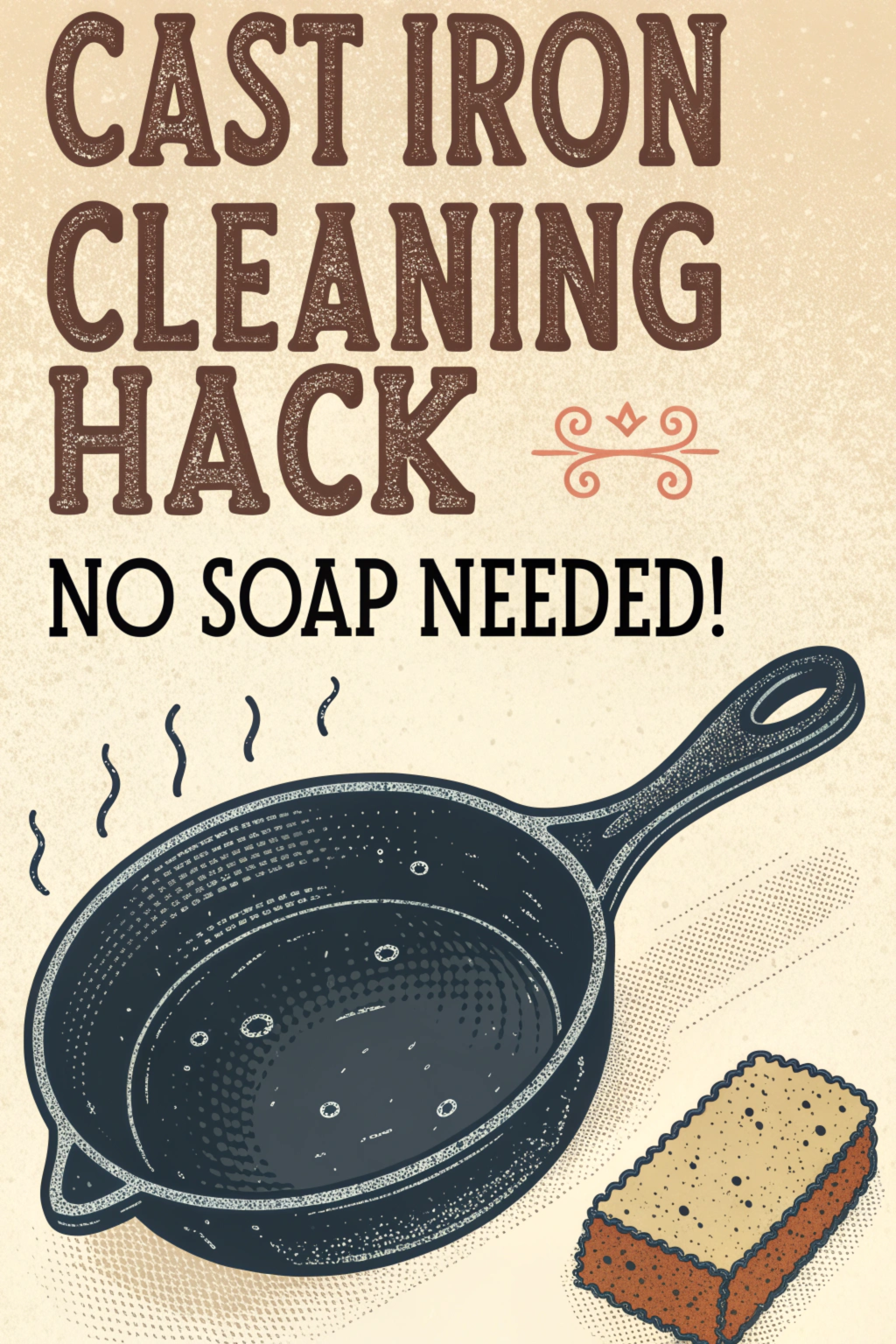Are you wondering how to keep your beloved cast iron skillet in pristine condition without damaging its seasoning? You’re in luck! This guide will show you a foolproof method for cleaning cast iron cookware without using soap. Yes, you read that right – no soap needed!
Why Avoid Soap on Cast Iron?
Before diving into the cleaning method, let’s understand why traditional dish soap isn’t your cast iron’s best friend. Cast iron cookware develops a protective layer called “seasoning” – a polymerized coating of oils that:
- Creates a natural non-stick surface
- Prevents rust formation
- Adds subtle flavor to your dishes
- Protects the iron from moisture
Using soap can strip away this valuable seasoning, forcing you to start the seasoning process all over again.
The Essential Cast Iron Cleaning Method
What You’ll Need
- Coarse salt (kosher or sea salt works best)
- A clean, dry cloth or paper towels
- Optional: chainmail scrubber or plastic scraper
- Heat source (stovetop or oven)
- Cooking oil for re-seasoning
Step-by-Step Cleaning Process
- Let It Cool Allow your pan to cool completely after cooking. Never shock hot cast iron with cold water – this can cause warping or cracking.
- Remove Food Debris
- Scrape off any stuck-on food using a plastic scraper
- For stubborn bits, sprinkle a generous amount of coarse salt into the pan
- Use the salt as an abrasive, scrubbing in circular motions with a cloth
- Wipe Clean
- Discard the used salt and food particles
- Wipe the pan thoroughly with a clean, dry cloth
- Check for any remaining residue and repeat if necessary
- Dry Completely
- Place the clean pan on low heat for 2-3 minutes to ensure it’s completely dry
- This step prevents rust formation
- Re-season Lightly
- Apply a very thin layer of cooking oil to the entire surface
- Heat until the oil just starts to smoke
- Let cool and store
Pro Tips for Cast Iron Care
- Never soak your cast iron cookware
- Store in a dry place with good air circulation
- If cooking acidic foods (tomatoes, citrus), clean immediately after use
- Place a paper towel in the pan during storage to absorb any moisture
- For extra protection, hang your pans instead of stacking them
Troubleshooting Common Issues
Rust Spots
If you notice rust, don’t panic! Scrub the affected area with steel wool, then immediately re-season the entire pan.
Sticky Residue
For particularly stubborn residue, heat the pan with coarse salt for a few minutes, then scrub. The heat helps loosen stuck-on food while the salt acts as an abrasive.
Dull Appearance
If your pan looks dull or gray, it simply needs re-seasoning. Apply a thin layer of oil and bake upside down in a 450°F oven for one hour.
The Benefits of Proper Cast Iron Care
Taking care of your cast iron cookware properly:
- Extends its lifespan (potentially for generations)
- Improves its non-stick properties over time
- Maintains consistent cooking performance
- Prevents the need for replacement
- Preserves its value as a kitchen investment
Conclusion
With this no-soap cleaning method, your cast iron cookware will continue to be a reliable kitchen companion for years to come. Remember, the key to cast iron care is consistency – follow these steps after each use, and your pan will reward you with decades of excellent cooking performance.
Ready to Start?
Gather your supplies and give this method a try after your next meal. Your cast iron skillet will thank you with years of faithful service and increasingly better performance.
Have questions about cast iron care? Leave a comment below, and we’ll help you troubleshoot any issues you’re experiencing with your beloved cookware!

